14:54, October 4, 2023
BHG - If the "stone paradise" spreads out many majestic landscapes that overwhelm visitors; then the roofs, stone fences, and rammed earth walls... make us feel hypnotized when we "accidentally" get lost in a cultural heritage site that is both charming and mysterious!
“Check-in” at Pao's house, Vuong's mansion
Watching the movie Pao's Story (directed by Ngo Quang Hai, released in 2006) and being captivated by the innocence of Pao (actress Do Hai Yen) and the majestic yet thorny, heartbreakingly beautiful scenes of the Stone Plateau. As Pao said, "My house has a square window overlooking the mustard garden...", the house where "Pao's Story" was filmed in Sung La commune (Dong Van) is now not much different from the movie, with 3 U-shaped rows, yin-yang tiled roof, rammed earth walls, wooden pillars placed on carved stone blocks, and stone used to pave the yard. The stone fence still seems to echo the young man's heartbreaking flute...
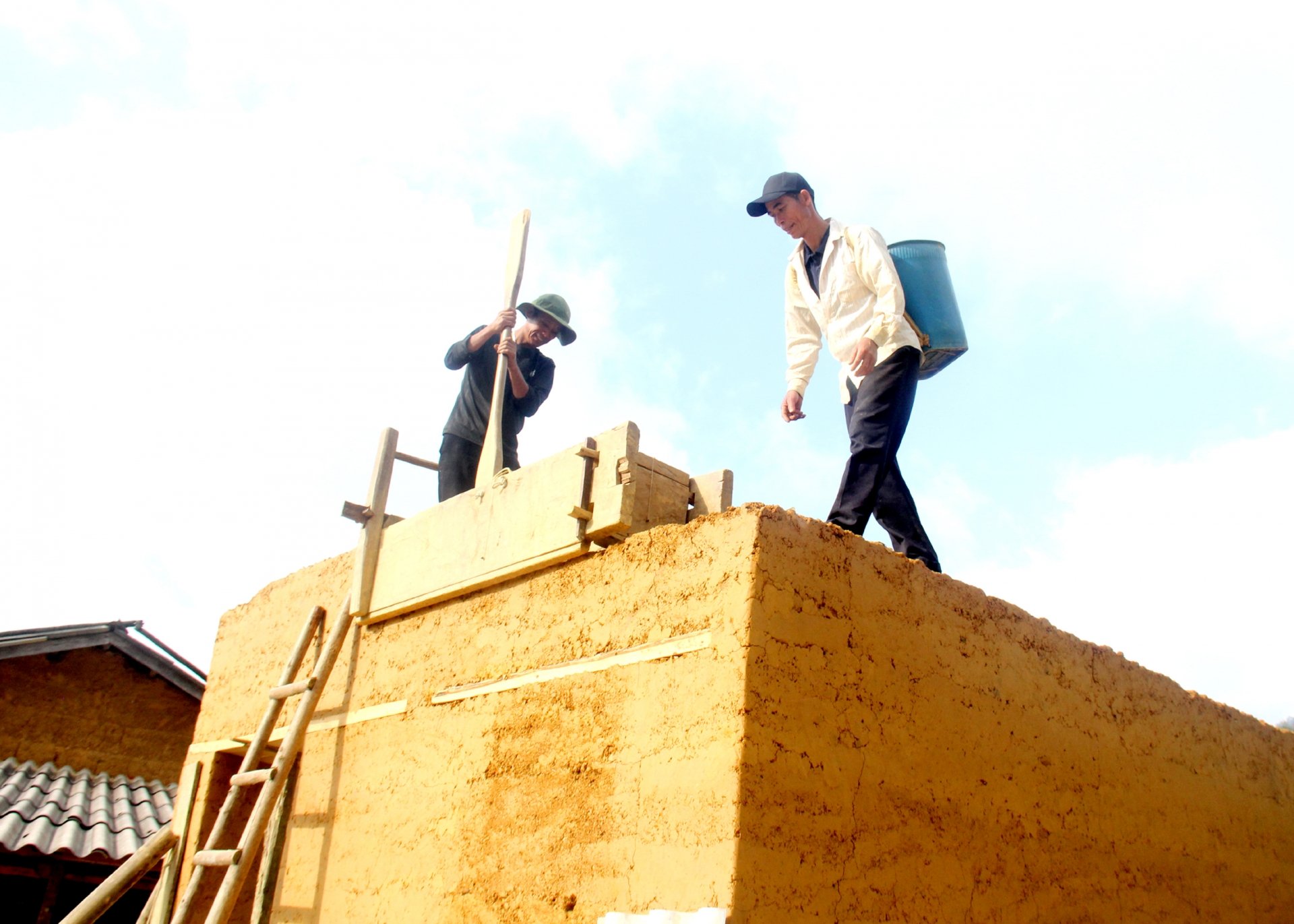 |
| The worker used a mallet to pound the earth to make a rammed earth house. |
Pao's house opens up many business opportunities, costume rental services, medicinal herb trading, flower gardens for guests to take photos... We have noticed that many villages in the Dong Van Stone Plateau have soon exploited their traditional cultural values and "know how" to turn them into unique tourism products and services. Lo Lo Chai village, Lung Cu commune, where most of the Lo Lo people live, is an example. Lo Lo Chai attracts us with its unique traditional culture and friendly, hospitable people. Since tourists came to the village, the Lo Lo people have "turned" hundreds of years old houses, rammed earth houses, yin-yang tiled roofs, stone fences... into homestays, into tourism products. We feel that community tourism is adding to the vibrant and attractive picture of life in the highlands. Tourism also contributes to sustainable enrichment right on the land that seems to have only arid rocky mountains in the far North.
If Pao's house is a "must-visit" place that brings back many memories, then the Vuong Palace (or the Vuong Palace Historical Site in Sa Phin Commune, Dong Van District) is a destination that makes visitors feel like they are entering a once-glorious "kingdom". Seen from National Highway 4C, the Vuong Palace stands out in the middle of the valley with a deep green ancient Sa Moc forest. The unique feature of the "Vuong" shaped architectural work is that the palace is surrounded by two walls built of boulders, with loopholes and guard posts. Visitors step into the doorways of three houses: the main house facing the citadel gate, two side houses parallel to each other and perpendicular to the main house. All the columns, rafters, floors, walls, and roofs are made of precious wood, exquisitely carved by the best Mong craftsmen. The typical features of Chinese and Mong architecture are shown in the stone fences. Especially the curves, curves, and exquisite carvings. Or the green stones, Sa Moc wooden pillars and terracotta tiles roofed in the yin-yang style...
Here, many images of the family and of Mr. Vuong Chi Sinh, who participated in the revolution and became a delegate of the 1st and 2nd National Assembly of our country, are still preserved. He once held the position of Chairman of the Administrative Committee of Dong Van district. Thanks to his many contributions to the revolution, he was honored to be named Vuong Chi Thanh by President Ho Chi Minh and awarded the eight words "Tận trung bao quốc, bất thu no lo" (Loyal to the country, not willing to be a slave) and a sword. Mr. Vuong Chi Sinh is the son of "King Meo" Vuong Chinh Duc. At that time, realizing the role of Mr. Vuong Chinh Duc and the Mong armed forces in the homeland, Uncle Ho paid great attention to ethnic minorities. Around 1945, he sent a representative of the Viet Minh to welcome the "King Meo" to the capital to discuss national affairs. However, at this time, Mr. Vuong Chinh Duc was old (81 years old), so he authorized his son, Vuong Chi Sinh, to go on his behalf to meet Uncle Ho.
Happy notes among the vast rocky mountains
Like the historical site of the Vuong Dynasty, the house where the film “Pao’s Story” was filmed still retains its old appearance and historical values. The villages in the Stone Plateau always have an attraction for us. Like the buckwheat cake, the more you eat it, the more you feel its “addictive” sweet taste. When we “lost our way” to this village, it urged us to run to another village. The rustic yet poetic features of the village are like musical notes that write on the Stone Plateau a lively and attractive melody of life.
Many elderly people jokingly said: “The Southern accent is hard to hear”, but they were very happy to tell stories about sowing rice, planting corn in pear orchards, and peaches with heavy fruit. From remote villages, hard to name, on the journey on the Stone Plateau we had time to visit, become familiar with and will miss very much when going down to the plains. Remember Na Khe, Lao Va Chai, Trang Kim, Pa Vi, Xin Cai, Son Vi... green corn hills, yellow pumpkin flowers blooming on the rocky slopes calling for a warm and prosperous season. Remember Pho Cao, Sung La, Ma Le... stone fences, mossy roofs peacefully in deep valleys or on steep mountain slopes.
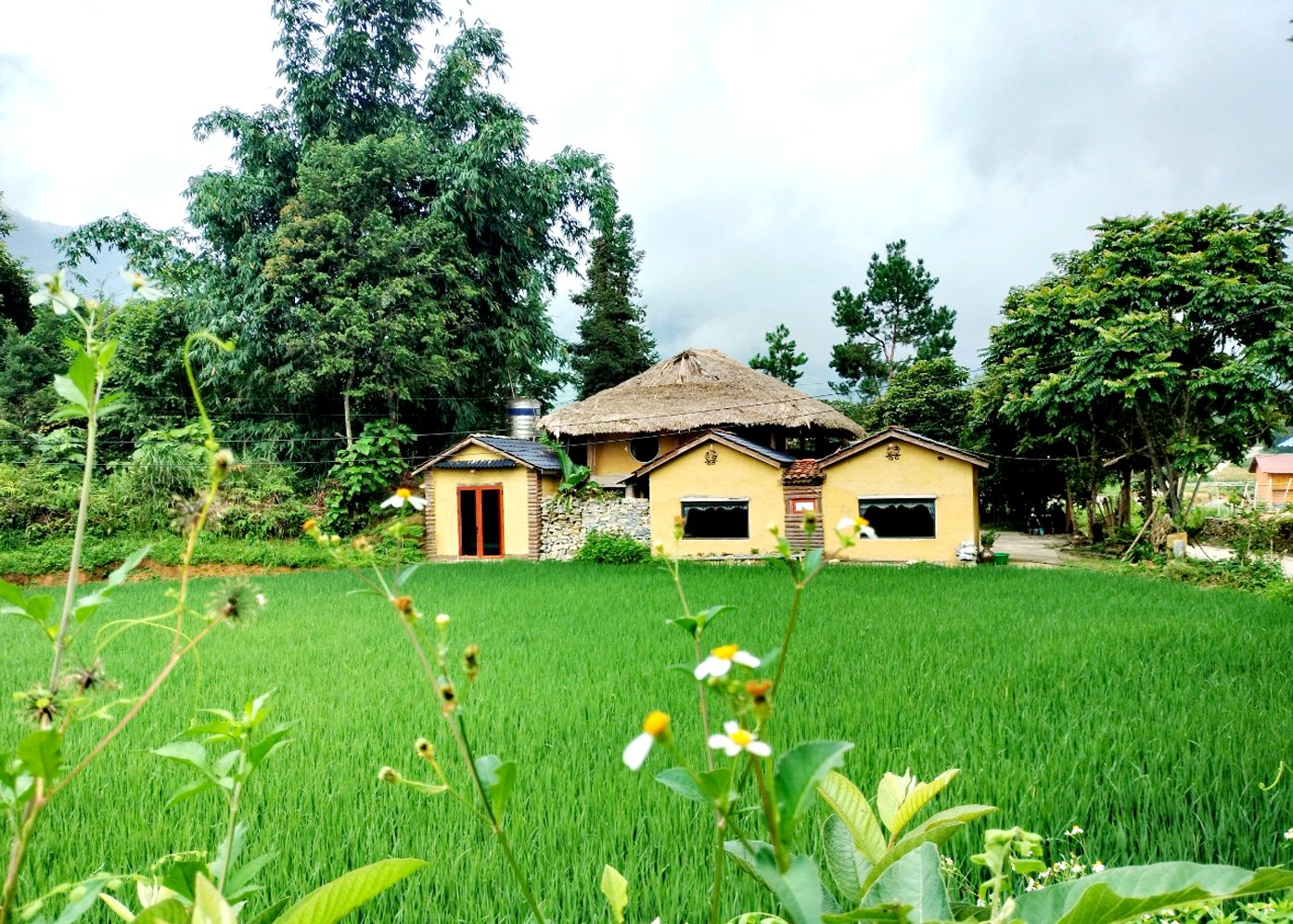 |
| A homestay in Nam Dam village (Quan Ba) with thatched roof and rammed earth walls as beautiful as in a picture. |
And I remember one day in Nam Dam village (Quan Ba district) in the middle of a dreamy valley at the foot of the twin mountains, Mr. Ly Dach made a pot of strong tea and invited us to "drink a cup of tea to warm up". Mr. Ly Dach's family opened a homestay to welcome tourists many years ago, but it was "stopped" when the COVID-19 pandemic broke out and the signboard "was also removed". But now, "I am building 4 more rooms with rammed earth walls and tiled floors... Foreign guests really like to stay in my village, especially during Tet, when we go into the kitchen to make cakes and cook. If you want to eat chicken, we will just catch chicken to eat" - Mr. Ly Dach honestly said. The simplicity of the villagers has brought tourists back to the village, many villagers have renovated and built new rooms. Mr. Ly Dach's two children have their own families and also opened a homestay nearby.
On the unfinished rammed earth wall, this morning, the group of workers continued to make a wooden mold, then carried soil into the mold and used hammers to compact the soil. Mr. Phan Sai - a skilled rammed earth wall worker, said: "The ramming step must be done very carefully, the wall can stand firmly for hundreds of years. The rammed earth house is made entirely of thick rammed earth without any pillars or piles. To create walls several spans thick, usually choose soil with high adhesion, remove all tree roots, large rocks, grass and rubbish". Building a rammed earth house is more expensive and requires more workers, but according to Mr. Ly Dach, the government is encouraging and people are unanimous in preserving the traditional architectural style and anyone building a new house must comply with that regulation.
The entire Nam Dam village has 60 households, all of whom are Dao ethnic people, many of whom provide homestay services that meet the standards to welcome guests. Although we were just passing guests, Mr. Ly Dach enthusiastically invited us to have breakfast and go to the fields to pick corn together. His family has a few fields at the foot of Doi Mountain, and the corn is brought home to dry in the yard, but Mr. Ly Dach still shook his head: "The corn season is very poor. There is little rain, so the fruits are small."
The production life of the people depends entirely on the weather, sunshine and rain of God, but the right solutions of the government and the awareness of the people to promote the cultural values of their ethnic characteristics have opened up a new, more sustainable direction of development. Thanks to the development of community tourism, the life of the Dao people here is increasingly prosperous.
For us, enjoying food is also a challenging experience like overcoming steep mountain passes. Egg rolls, vermicelli with grilled pork (or dried), thang den... are "easy to eat" like going through a peaceful valley; men men, chao au tau... eating and asking "is it any good" like the car is going uphill; enjoying hot chicken (or beef) pho is like admiring the majestic view on the highest rocky mountain peak. But the "thrilling feeling" like climbing Tham Ma slope and "holding your breath" down Ma Pi Leng pass must be thang co in Dong Van Ancient Town, although it is not "pure thang co" because the restaurants have processed it "for lowland customers to eat easily" with many spices and rich green vegetables, but we guarantee that you will never forget its unique taste!
Unlike the winter when the rocks are only a dull gray color, pumpkin seeds and corn seeds cannot germinate; this season, the trees are covered with an endless green color full of vitality on the Stone Plateau. The people in the plateau have forced the rocky mountains to bloom. We suddenly thought that it was another magnificent masterpiece created by human hands, in the extraordinary life of "using human strength to reap natural strength". To have a green color on the rocky mountains, the people have to bend their backs to carry soil from deep valleys and pour it into each crevice of the rocks, to have soil to plant each corn kernel. Each corn kernel and each grain of rice is made from many drops of sweat soaked into the soil and rocks!
Such extraordinary life stories always keep us stepping into each "stone book page" and have traveled around the Stone Plateau. So even though it is not the right time for the market, not the season of buckwheat flowers, not the season of peach blossoms, plum blossoms ... the Stone Plateau is still full of attraction. Taking culture to develop tourism and developing tourism to preserve culture, that is the right direction of Ha Giang province. Thereby, opening the "gate to heaven" for tourists to step into and explore the Stone Plateau heritage, blending into the melody of life on the stone mountains with the passionate invitation of the mouth harp beside the stone fence.
Far away from the Stone Plateau, the sounds of the mountains and forests still echo, "Who is giggling in the corn"!
Article and photos: TRAN PHUOC (Vinh Long Newspaper)
Source




![[Photo] General Secretary attends the parade to celebrate the 80th anniversary of the founding of the Korean Workers' Party](https://vphoto.vietnam.vn/thumb/1200x675/vietnam/resource/IMAGE/2025/10/11/1760150039564_vna-potal-tong-bi-thu-du-le-duyet-binh-ky-niem-80-nam-thanh-lap-dang-lao-dong-trieu-tien-8331994-jpg.webp)
![[Photo] Discover unique experiences at the first World Cultural Festival](https://vphoto.vietnam.vn/thumb/1200x675/vietnam/resource/IMAGE/2025/10/11/1760198064937_le-hoi-van-hoa-4199-3623-jpg.webp)

![[Photo] Opening of the World Cultural Festival in Hanoi](https://vphoto.vietnam.vn/thumb/1200x675/vietnam/resource/IMAGE/2025/10/10/1760113426728_ndo_br_lehoi-khaimac-jpg.webp)






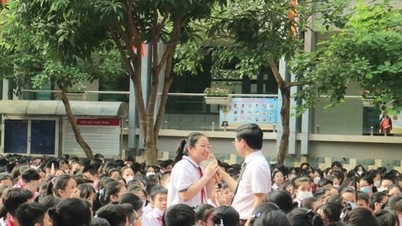





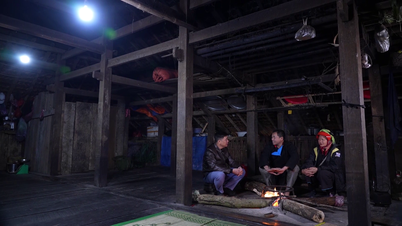

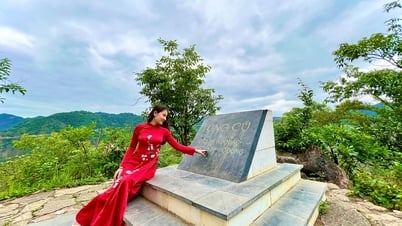

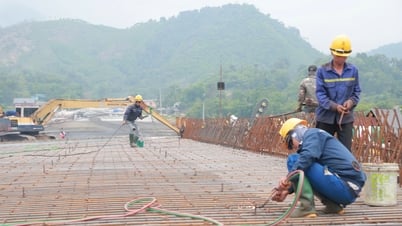
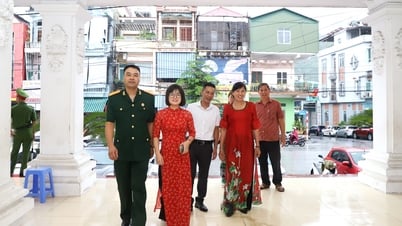

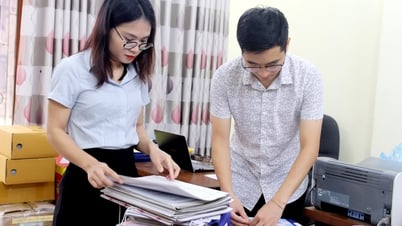







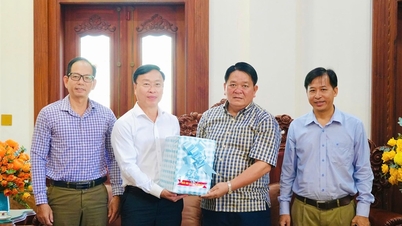
![[Photo] Ho Chi Minh City is brilliant with flags and flowers on the eve of the 1st Party Congress, term 2025-2030](https://vphoto.vietnam.vn/thumb/1200x675/vietnam/resource/IMAGE/2025/10/10/1760102923219_ndo_br_thiet-ke-chua-co-ten-43-png.webp)































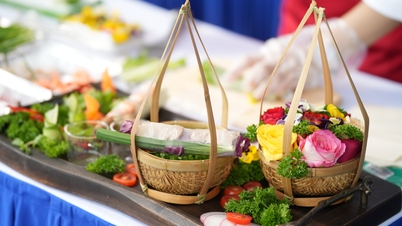
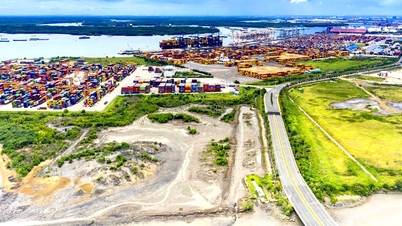


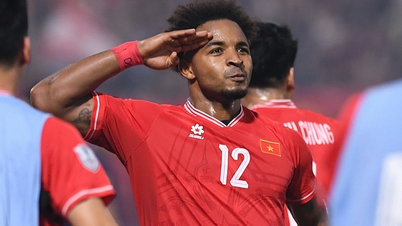


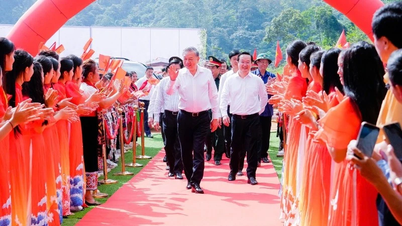




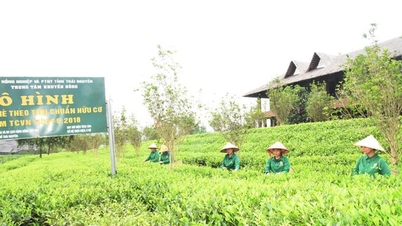





















Comment (0)